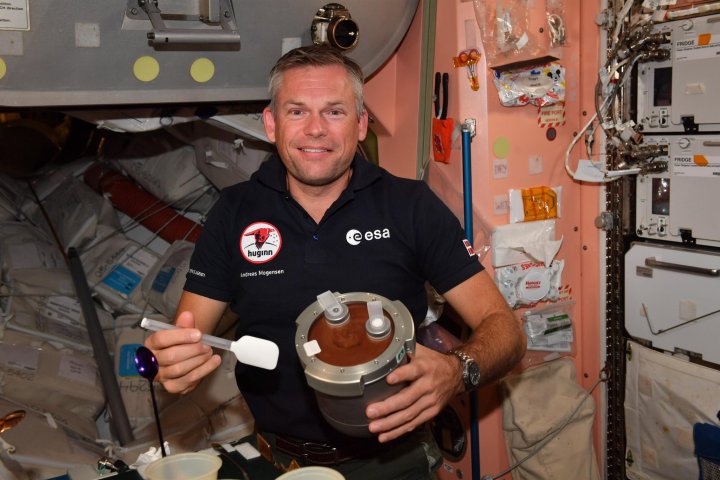
Astronauts on board the International Space Station (ISS) keep a busy schedule during their six-month stints in orbit. Most of their time is taken up with carrying out scientific research in the unique microgravity conditions that the facility provides, while the occasional spacewalk takes care of upgrades and general maintenance.
The research programs include learning about the best way to grow crops off-Earth and aboard the relatively cramped conditions of the orbital facility, an especially important task if we’re ever to send astronauts on long-duration missions to a lunar base or even to Mars.
NASA has already developed an apparatus for growing green leafy vegetables for consumption on board the ISS, but these are hardly the kind of comfort foods that you might want to indulge in as you hurtle toward the red planet, with Earth becoming little more than a distant dot.
That’s why European Space Agency astronaut Andreas Mogensen has been excitedly posting about using a special device to make chocolate mousse aboard the orbital facility in recent days.
“Made chocolate mousse for my crewmates!” the Danish astronaut said in a post on social media. “It turned out delicious and was a huge hit.”
I made chocolate mousse for my crewmates!
It turned out delicious and was a huge hit. Now I just have to come up with an excuse of why I can cook for my crewmates in space but not for my wife at home😅
The chocolate mousse was a test of an ESA and French Space Agency (CNES)… pic.twitter.com/WyAYq05rMN— Andreas Mogensen (@Astro_Andreas) September 24, 2023
Mogensen explained that the chocolate mousse was a test of an ESA and French Space Agency (CNES) experiment called Food Processor, aimed at finding out what dishes can feasibly be made in space, noting that tasty treats like this can be just as vital for morale as vegetables are for maintaining good health.
“At the moment, all our food is prepared on the ground and pre-packaged,” Mogensen said. “All we have to do is rehydrate the food or heat it. Cooking food in space could be a big benefit for future crews.” This is especially true of long missions where there just won’t be enough room to take a full supply of food.
ESA says the objective of its Advanced System for Space Food (Food Processor) investigation is to test prototype equipment with one specific recipe that uses basic cooking functions such as beating egg whites and mixing products.
It said that a future version of the Food Processor machine will be able to weigh, mix, knead, heat, dry, cook, color, and rehydrate, paving the way for a slew of mouthwatering dishes that should keep spacefarers’ tastebuds tingling during lengthy missions far from home.


